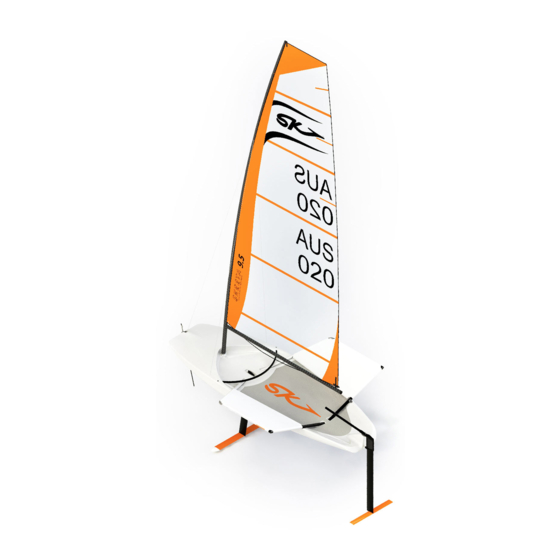Table of Contents
Advertisement
Quick Links
Advertisement
Table of Contents

Summary of Contents for SKEETA FOILING CRAFT NIKKI
- Page 1 NIKKI / SKEETA OPERATING GUIDE vol 1.2 Mar 2021...
-
Page 2: Table Of Contents
Index Introduction Sailing a scow Hull balance Light air sailing Planing upwind Planing downwind Launching Returning to shore and unrigging Foiling for the first time Sailing Take-off Steering for balance Safety Safety gear Caution Capsizing Towing Printed on recycled paper... -
Page 3: Introduction
This operating guide explains how to launch and sail, safety precautions and capsize recovery information for both Nikki and Skeeta. Information on how to assemble and rig your new Nikki or Skeeta is contained in the Rigging Guide. Sailing a scow Sailing a light scow is a lot livelier than most other dinghies. -
Page 4: Planing Upwind
Planing upwind The large planing surface, along with a large sail area and wide powerful wings, produces a dinghy with the amazing ability to “plane upwind”. Normally the preserve of trapeze driven high performance skiffs, the boat is fast, exciting and fun to sail on the plane both upwind and down. -
Page 5: Foiling For The First Time
This acts as a safety device, immediately lowering you to the water where you are once again under full control. Skeeta Foiling Craft provides you with the equipment to experience foiling. Foiling competently requires practice and is something we recommend you get training/coaching for. -
Page 6: Take-Off
With practice, you will gain the courage to lower the wand further, increasing the ride height. The boat will really begin to fly, and you will need to find some completely new sailing skills. Some of the things you will notice are that the boat remains stable, but all goes quiet save the swish of the foils and wand as the boat accelerates well beyond the wind speed. -
Page 7: Steering For Balance
To take-off successfully, it helps to sit fully out on the wings on a reach, then induce a small amount of windward heel by momentarily easing the sheet, once heeled to windward, bear away and sheet on to accelerate while bringing the rig over the centre of lift of the foils. - Page 8 The consequence is the boat becomes unstable as it heels in either direction. Therefore, you need to actively balance the forces to remain upright. This is quite the opposite of balancing a displacement dinghy and explains why the boat feels so different to sail on foils. In effect it is like balancing a stick on your hand or sitting on a bike.
-
Page 9: Safety
Be aware of the following warnings/cautions: Make sure you have only 1 person and appropriate safety gear (up to 65kg for Nikki, up to 100kgs for Skeeta) as stated on the plaque per boat. There is a risk of capsize. Read instructions to right Nikki and Skeeta below. -
Page 10: Capsizing
CAPSIZING 1. Locate and grab hold of the righting rope attached to the hull, underneath the wings. 2. Position yourself behind the centreboard, with your feet on the front bar of the wing close to the hull. 3. Pull on the righting rope and lean backwards. This will raise the rig out of the water. 4. -
Page 11: Towing
This allows the main foil to lift slightly to counteract the lift on the rudder foil and will reduce the chance of nosediving. For further questions or information, please contact your Dealer. Skeeta Foiling Craft Pty Ltd, Melbourne, AUSTRALIA skeetafoilingcraft.com...



Need help?
Do you have a question about the NIKKI and is the answer not in the manual?
Questions and answers